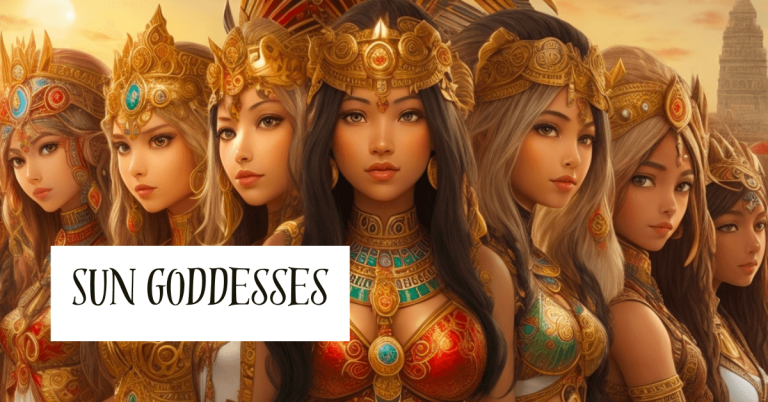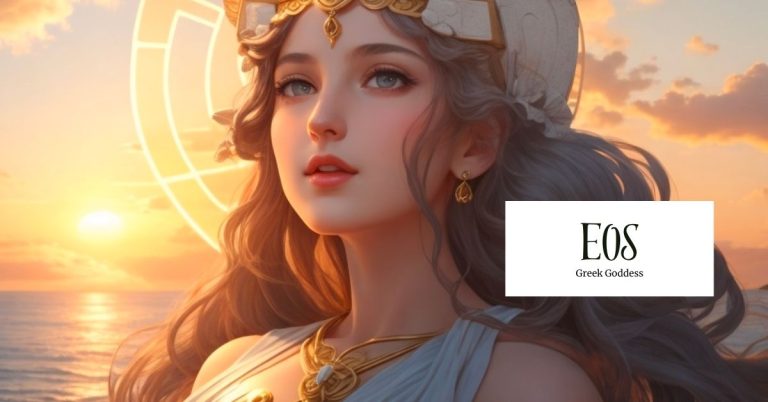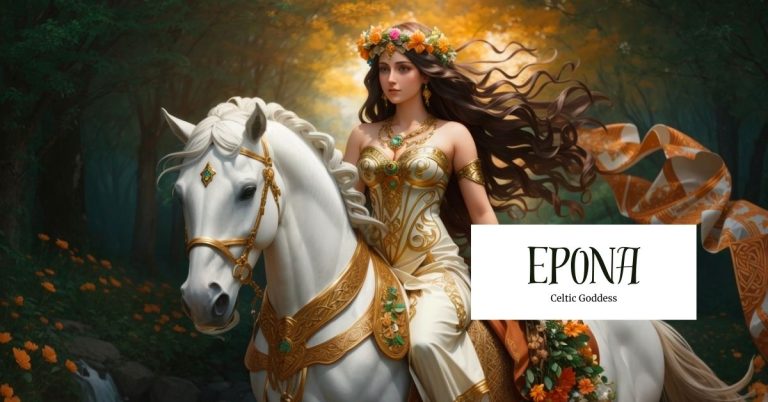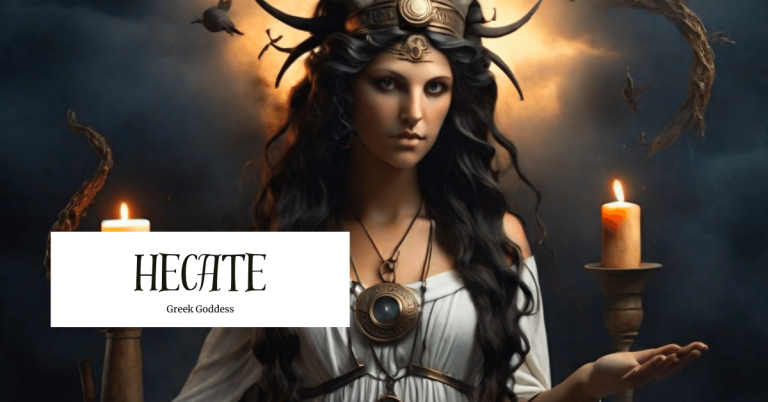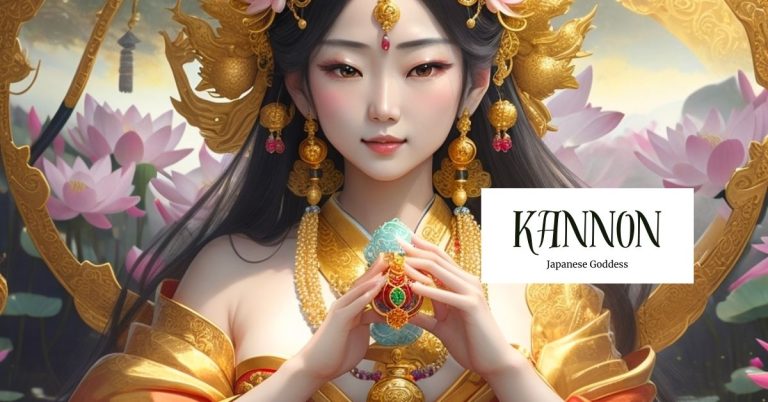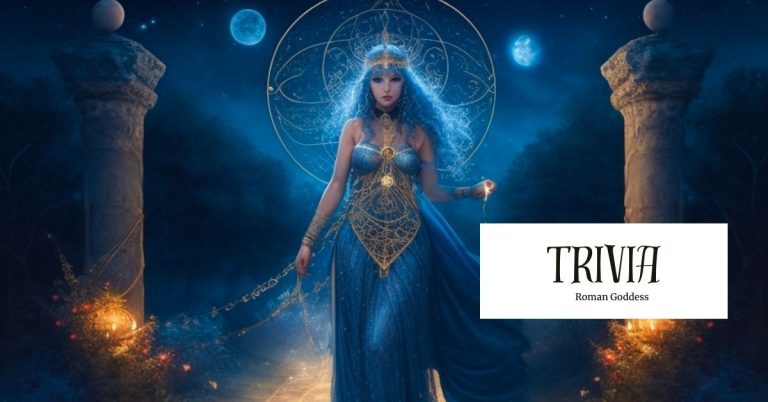Caer: Goddess of Dreams
Goddess Caer, hailing from the lineage of the Tuatha de Dannan, is a divine entity who transcends the boundaries of mortal existence. Her origin story, deeply rooted in the ancient Celtic lands of Ireland, Scotland, and Wales, unveils a character of exceptional beauty, independence, and transformative power.
At the core of her legend lies an annual ritual, enacted during the sacred festival of Samhain, in which she shapeshifts between the forms of a radiant woman and a majestic swan. This cyclical transformation mirrors the eternal rhythms of life and death that resonate through Celtic culture, and it encapsulates the essence of Caer’s enigmatic persona.
Overview
Source: Twinkl
Goddess Caer, also known as Caer Ibormeith or Caer Aisling, is a fascinating figure in Celtic mythology and folklore.Her story is often intertwined with that of Aengus Og, a prominent Irish deity, making her a central character in the mythological cycle of Irish folklore. Her story is predominantly found in texts like “The Wooing of Étain” and “The Dream of Aengus,” which are part of the broader Ulster Cycle of Irish mythology.
She is frequently linked to themes of love and desire, as her story revolves around a passionate pursuit of Aengus Og.Caer is also associated with dreams and prophecies, as her name “Aisling” translates to “dream” in Irish. This reflects her connection to the mystical and otherworldly aspects of Irish mythology.One of the central narratives involving Caer is the pursuit of Aengus Og. In “The Dream of Aengus,” Aengus falls in love with a beautiful woman he sees in his dreams. He searches for her in vain until he learns that she resides in the Otherworld as a swan-maiden.
Titles
- The Swan-Maiden of Dreams
- The Enchantress of the Otherworld
- Mistress of Transformation
- The Muse of Aengus Og
- Goddess of Love and Longing
Abilities
Perhaps one of Caer’s most iconic abilities is her shapeshifting prowess. She has the extraordinary capability to transform between two distinct forms: that of a captivating woman and that of a magnificent swan. This transformation occurs annually during Samhain, symbolizing the cyclical nature of her existence and the enduring theme of renewal in Celtic mythology.
Caer is often described as eternally youthful, with her appearance remaining unchanged over time. As the Celtic Goddess of Dreams and Prophecy, Caer is believed to have the power to influence and guide dreams. Those who seek her assistance may receive insights and messages through their dreams, as she is seen as a guardian of the dream realm. Caer possesses the gift of prophecy, allowing her to see glimpses of the future and offer insights into events yet to unfold.
In her swan form, Caer is closely connected to the natural world, particularly bodies of water. Her presence is often associated with lakes and rivers, emphasizing her affinity for the elements and the cycles of nature.
Characteristics
Source: Chistiane Ghanem
Caer Ibormeith is renowned for her extraordinary beauty. Whether in her human form or as a swan, she embodies ethereal allure and enchantment. Caer Ibormeith is often portrayed as eternally youthful, with an ageless countenance that never fades. Her hair is typically described as flowing and golden, cascading like strands of sunlight. Whether in her human or swan form, Caer Ibormeith possesses a graceful and elegant physique.
In her swan form, Caer is depicted as a majestic and pristine creature. Her feathers are described as white as snow, symbolizing purity, and they glisten in the light, creating an aura of enchantment. Regardless of her form, Caer Ibormeith is said to exude an aura of enchantment.
Traits
Caer Ibormeith is often portrayed as a fiercely independent deity. Caer’s ability to endure the cyclical nature of her existence demonstrates her resilience. Each year, she undergoes a transformation, embodying the theme of renewal and rebirth.
Her association with dreams and prophecy suggests a protective and guiding aspect to her personality. She is often invoked by those seeking insight through dreams, indicating her role as a guardian of the dream realm and a source of guidance in the subconscious.
Caer’s story is often intertwined with themes of love and longing, particularly in her pursuit of Aengus Og. Her passion for love and her willingness to undergo her annual transformation as part of this pursuit reveal her depth of feeling and emotional complexity.
Symbols
Source: Celtic Folk Witch
Swans are recurring symbols in Celtic mythology, often linked with goddesses. Within this context, they represent concepts of love, purity, and grace. As creatures of elegance and beauty, swans evoke a sense of purity and transcendent love that aligns with the ethereal nature of Caer Ibormeith.
Caer Ibormeith can be identified by the presence of a gold or silver chain hanging around their necks. This chain is a powerful symbol of their divine connection and signifies their unique role as intermediaries between the mortal and divine realms.
Festivals and Rituals
The Festival of Samhain, celebrated on October 31st, holds particular significance in the worship of Goddess Caer. This pagan festival marks the transition from the harvest season to winter and is a time when the boundary between the mortal world and the Otherworld is believed to be thin. It is during Samhain that Caer and her sisters take on the form of swans, beginning a year-long transformation.

Source: Feminism and Religion
In some celebrations, dance and theatrical performances inspired by the themes of transformation and love, akin to Tchaikovsky’s “Swan Lake,” may be incorporated to pay homage to Caer Ibormeith’s story and her association with swans.
Samhain rituals often include challenges and quests to recognize Caer among a flock of seemingly identical swans. These recognition rituals are inspired by the mythological tale of Aonghus, who successfully identified and married Caer after a similar challenge. Such rituals are performed to honor Caer’s story and symbolize the search for the extraordinary amid the ordinary.
Legends Associated with Goddess Caer
Born from the divine lineage of the Tuatha de Dannan and known for her annual transformation, Caer’s story is a captivating tale of enchantment and independence.
Origin Story
Source: Steffordii
Caer Ibormeith was born into the divine lineage of the Tuatha de Danann, a powerful race of deities in Celtic mythology. Her father, Ethal Anbuail, was a prominent figure among the Tuatha de Danann. They resided in Sidhe Uamuin, an otherworldly mound located in Connacht, Ireland. This underground dwelling, known as a sidhe, was a place of great significance in Celtic mythology, believed to be a gateway between the mortal realm and the supernatural.
Caer’s influence extended across the Celtic lands, as she was worshiped not only in Ireland but also in Scotland and Wales. Her name left a lasting imprint on the landscapes of these regions, with places like Caer Edin (Edinburgh) in Scotland bearing her name. In Ireland, her name was associated with the homes of other deities, including Caer Arianrhod, the residence of the Goddess Arianrhod.
Caer Ibormeith was a goddess of remarkable versatility and transformation. She possessed the extraordinary ability to shapeshift, transitioning between two distinct forms each year. In one year, she would take on the guise of a breathtakingly beautiful woman, radiating an ethereal allure. In the next year, she would transform into a magnificent swan, symbolizing both beauty and the power of change.
In Love with the God of Love
Source: Wikipedia
Caer Ibormeith was not one to have her destiny dictated by others. With fierce independence, she decided that her heart belonged to Aengus, the God of Love. To win his affection, she embarked on a journey through dreams. For an entire year, she visited Aengus every night, appearing as a mysterious and beguiling figure in his dreams. Yet, whenever he reached out to touch her, she would vanish, leaving him yearning for her presence.
Aengus became consumed by his longing for the enigmatic woman who visited him each night. His days were spent in a haze of desire, and he could think of nothing but reuniting with the woman who had captured his heart. But he did not know her true identity, and so he turned to his family for help in finding her.
Undeterred by the challenge ahead, Ethal Anbuail offered Aengus a path to win Caer’s heart. He instructed Aengus to go to the mystical lake known as the Dragon’s Mouth on Samhain, the sacred Celtic festival. There, Aengus would find Caer Ibormeith and her 150 handmaidens, all in their swan forms. The challenge was clear: Aengus had to identify Caer among her identical-looking handmaidens and call to her, hoping she would come to him willingly.
As Aengus gazed upon the swans swimming in the lake, he felt a sense of doubt. They were all beautiful, each adorned with a silver chain. He feared he might never distinguish Caer from the others. But then, he saw a swan that stood out—a swan adorned not only with a silver chain but also with a radiant golden one. This swan possessed a unique elegance and beauty that surpassed all the rest.
With conviction in his heart, Aengus called out to the swan with the silver and gold chain. Slowly, Caer Ibormeith swam towards him and, with a graceful transformation, returned to her human form. Aengus, overwhelmed with love, asked her to be his wife.
Caer Ibormeith agreed, but with a single condition: that she could return to the water whenever she wished. In response, Aengus, demonstrating his unwavering devotion, transformed himself into a swan, joining his beloved in the water. Together, they swam side by side, their love transcending the mortal realm.
The Swan
Source: Deviant Art
Caer Ibormeith, Celtic Goddess of Dreams, Prophecy, and Sleep, emerged from the sacred lineage of the Tuatha de Dannan. Her father, Ethal Anbuail, was a prominent figure among these mystical beings. Together, they resided in the ethereal realm of Sid Uamuin, a place where the boundaries between the mortal world and the supernatural realm blurred.
At the heart of Caer’s legend was the captivating phenomenon that unfolded every Samhain—a momentous occasion in the Celtic calendar. It was during Samhain, the pagan festival that marked the transition from the harvest season to winter, that Caer’s remarkable power of transformation came to life.
Each year, without fail, Caer would undergo a profound metamorphosis. For one year, she would become a radiant and alluring woman, captivating all who beheld her with her beauty. Then, at the turn of the next Samhain, she would undergo a breathtaking transformation into the form of a majestic swan. This cyclical change, from human to swan and back again, represented the perpetual cycle of life, death, and rebirth—a reflection of the enduring Celtic belief in the eternal flow of existence.
Final Thoughts
Known as the Celtic deity of Dreams, Prophecy, and Sleep, the stories surrounding her are a testament to the profound and enduring nature of Celtic folklore. Caer’s annual transformation, the hallmark of her myth, serves as a reminder of the eternal cycles of life and the interplay between the mortal and divine realms. Her ability to shapeshift between human and swan forms speaks to the transformative power of dreams and the cyclical nature of existence, leaving us with a profound sense of wonder.
Her ethereal beauty and independence serve as a reminder of the strength that resides within each of us, urging us to embrace our own transformative journeys with courage and self-determination. The legends of Goddess Caer Ibormeith invite us to reflect on the profound themes of dreams, prophecy, and the interplay between the mortal and divine realms. In doing so, we find ourselves drawn into a world where enchantment and reality intertwine, where the timeless stories of the past continue to inspire and illuminate our path forward.


